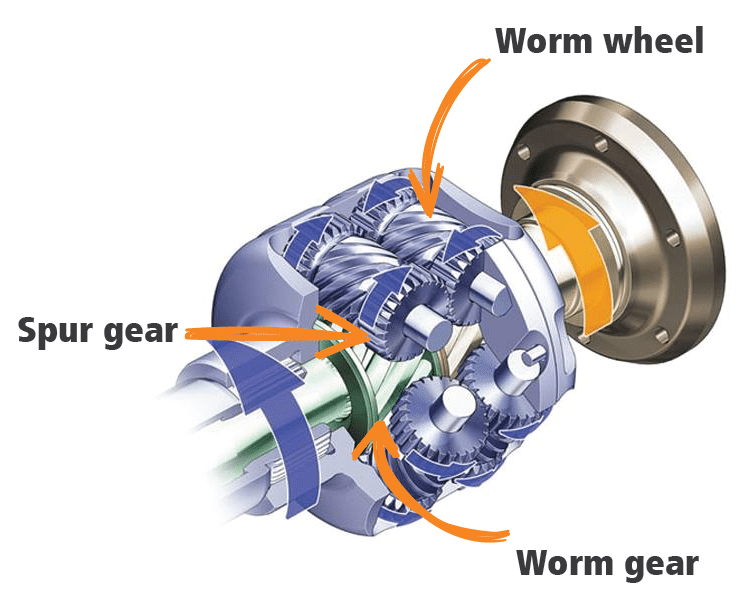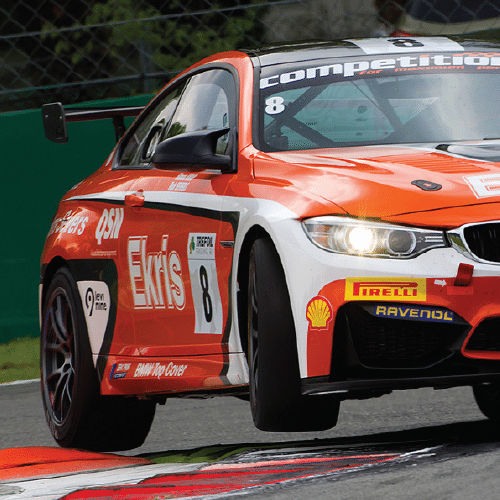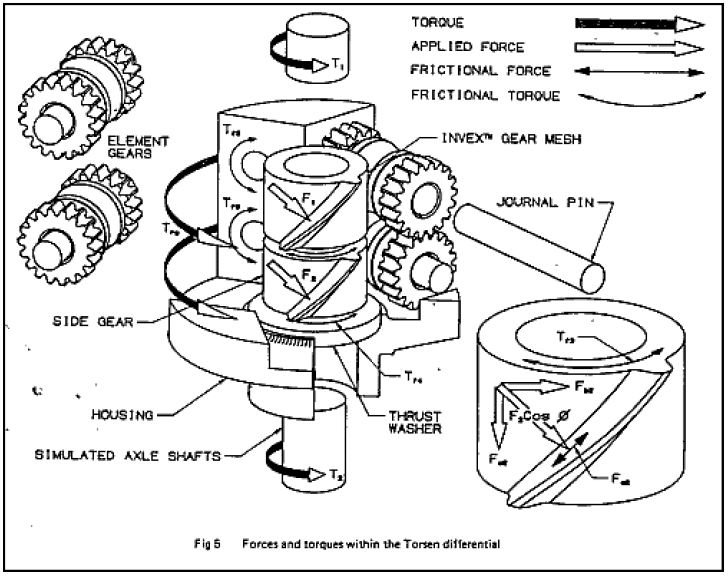Reading time: 8-10 minutes
In our previous blog, we explained the working principles of the plated limited slip differential. In this blog, we would like to explain how a Torsen limited slip differential works and how it differs from a plated LSD, like the Drexler LSD. In the rest of this blog, it is assumed that the reader has knowledge about regular open differentials and plated limited slip differentials.
The Torsen differential and the plated limited slip differential serve the same purpose; remaining the maximum amount of torque possible to the wheels at all times, while still being able to go around corners during regular driving. Both use friction, but the way friction is created and used is very different.
Torsen components
The Torsen, geared or helical differential does not contain spider gears and side gears like an open differential or a plated LSD. Instead, there are worm gears (on the driveshafts) and worm wheels, which are connected to the differential casing. On the end of the worm wheel, there are spur gears which connect the worm wheels together. When the car is driving straight, the worm wheels just push against the worm gears and turn both wheels at the same speed. As both wheels are travelling at the same speed, there is no need for the worm wheels to turn around their own axis.

How it works
The Torsen works the same as an open differential when the torque applied to both wheels is equal. If one axle spins faster, it turns the worm gear. This worm gear is connected via the spur gears with the worm gear of the other axle and makes it turn in the opposite direction, therefore making it possible to have both wheels spin at a different speed in corners. The inside wheel turns slower by the exact amount the other wheel turns faster. This difference in speed is dictated by the road, but what happens if the car is not in a corner?

Illustration by Alex Y.
If one of the wheels encounters a situation where it has wheelspin, the geared differential will bias torque to the wheel with grip. This happens because there is friction in the differential. There is friction between the worm gear and worm wheel, between both worm gears and between the worm wheels and the housing where they turn around their own axis. This friction is created by design and is why the differential works as an LSD. Under load, the gears cannot rotate freely. The friction between the gears is used to restrict the amount of speed difference between both wheels. The torque will be biased over the differential. The torque bias ratio depends on the design of the gears and friction points, but could be 4:1 for instance. This means the wheel with more grip can receive 4 times the torque of the other wheel (so 80% vs 20%).
Please note that the wheel with grip receives 4 times the grip the other wheel can transfer to the road. It does not mean 100% of the engine torque can be used. Let’s say the engine puts out 300 Nm of torque and the spinning wheel can only transfer 50 Nm of torque to the surface it is on. In a regular open differential, the other wheel would receive 50 Nm of torque as well. The total amount of torque to the wheels is 100 Nm. In a Torsen differential with a 4:1 bias ratio, the other wheel will receive 200 Nm or torque. The total amount of torque to the wheels is now 250 Nm.
Upsides
The pros of a helical LSD as opposed to a plated LSD are low noise and low maintenance, which is why they are very suitable for street cars. They can be installed and basically forgotten about. Racecars are generally very loud and require much maintenance because the driveline is much more stressed than a road vehicle, so noise and maintenance are not really issues.
The lock-up characteristics of a Torsen are very linear from zero lock to the maximum possible lock. As there is no stick-slip point like with the plated LSD, it makes the Torsen easy and very predictable to drive.
Downsides

A plated LSD offers the ability to adjust it to the needs and likings of the customer and his or her car. The possibilities are almost endless and very effective. The pressure angle, preload, type of friction plates, amount of plates and more is all customizable. This also means the plated LSD can be adjusted for different types of circuits and surfaces.

Chocholek SE (1988) The development of a differential for the improvement of traction control. C368/88 © IMechE
Conclusion
In conclusion, both types of LSD have pros and cons. An easy to compare overview is listed below.
| Torsen LSD | Plated LSD |
|---|---|
| Low maintenance | Maintenance needed |
| Very little adjust-ability | Adjustable for perfect match |
| Low operational noise | Noisier than open differential |
| No speed when wheel lifted | Limited speed when wheel lifted |
| Low costs | Relative higher costs |
We find the adjust-ability of the plated LSD a big upside in a motorsports application. Which type of LSD is best for your application, depends on your needs and what type of driving or racing you would like your car to be suitable for. If you are in the need for any advice on limited slip differentials, please contact us to help you find your best drivetrain solution.
